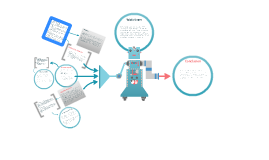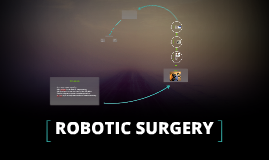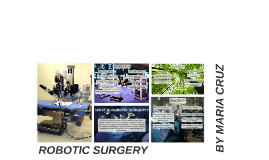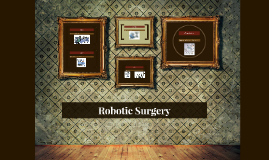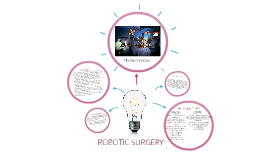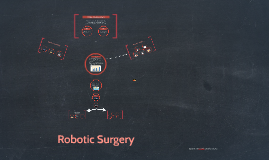Robotic Surgery
Transcript: Marketing Robotic surgery is a dynamic developing technology. With its inception and continued use, we see economic issues, gender issues, and self image issues arise. These issues are highly complex, and many will not be answered for some time. Elson, 2000; Ancheta, 2000 Economic Aspects Most robotic surgery today is minimally invasive. It leaves very little markings on the body, and postoperative hospital time is often unnecessary. However, there are some forms of surgery that have lasting effects on the bodies and psyches of patients, regardless of visible scars. Currently, the da Vinci system can perform hysterectomies and myomectomies. Since robotic surgery technology advances so quickly, it would be safe to assume that robots may be performing cosmetic surgeries in the near future. However, some believe that the battle between the truth about robotic surgery and the novelty of it is lost because the marketing of the procedures is too strong. Conrad defines medicalization as "defining a problem in medical terms, usually as an illness or disorder, or using a medical intervention to treat it." I posit that a process such as surgery, which is a form of medicalization in and of itself, can be medicalized. Conrad talks at length about how biotechnology companies are "major players" of medicalization. Looking at the history of robotic surgery, one can see how the medicalization of surgery itself occurred. It all started with a need for more precision and better technique (the disease), and it was pushed along to what it is today by Army funding. Without this funding, we likely would not have the da Vinci or Zeus systems (the medical intervention that treats the problems of nonrobotic laparoscopic surgery). In the examples above, one can clearly see how the change in the body as a result of surgery has an impact on the mind of a person, or how the state of mind of a person will drive them away or towards having a surgical procedure. The interaction between body and mind in these cases cannot be denied. When robots perform these surgeries, they become the agents that create the link, rather than an actual surgeon. Questions to which there are no clear answers arise like "Should I trust this machine to give me a proper face lift?" or "Am I comfortable with a machine conducting a surgery on something that I use to gender identify?" Lanfranco et al, 2004 Continuing Development PROBOT- prostate surgery ROBDOC- hip replacement femur machining US Army funds research for battlefield application Companies and robotics develop out of Army funding AESOP- Automated Endoscopic System for Optimal Positioning - auditory commands to position camera Integrative Surgical- da Vinci Surgical System Computer Motion- Zeus system Robotic surgery is a relatively new and rapidly growing technology. Like most new technologies, there are still many factors about robotic surgery that are unknown. This presentation will show how history, economy, and organics interact to create complexity in a technology that is superficially simple. Robotic surgery is an expensive procedure, but it is "unclear whether the outcomes are better, worse, or the same." $1.39 million for the machine $140,000 per year for service contract $1,500 to $2,000 in disposable materials per patient, patient cost much higher Robotic surgery has an extremely steep learning curve, requiring a massive time investment "Robotic surgery has to be better to justify its learning curve, to justify its unknown cancer control, to justify its increased cost" Both doctors and patients fallaciously believe that newer is better, but there are some healthcare professionals trying to move away from that message. Gender Identity and Gynecological Surgery Conrad, 2005 (Kolata, 2010) Commodity-fetishism Robotic Surgery Because of its high costs, hospitals often market robotic surgery using questionable claims. Doctors and medical centers favor robotic surgery. Medicalization Lanfranco et al, 2004 Organic Aspects Beginning Robotic surgery has roots in minimally invasive laparoscopic surgery Laparosopic surgery has limitations Loss of haptic feedback, moving instruments while watching 2D video, restricted degrees of motion, and others. Robotic surgery developed to overcome these limitatoins Puma 560- robot developed in 1985 to increase precision in neurosurgical biopsies Current Systems da Vinci- movable cart with 2 instrument arms and a camera arm. 3D image is rendered over physican's arms giving the impression of being at the surgical site Zeus- table mounted 3 armed system that displays complete visualization of OR on a monitor (Kolata, 2010) Historical Aspects "Women's decisions to have cosmetic surgeries are socially situated and experienced." (Ancheta, 2000) Rebecca Ancheta delineates three key themes that come into play when women decide to have cosmetic surgery. The first is a response to the "mask of aging." The second is the importance of social networks. The third are beliefs






